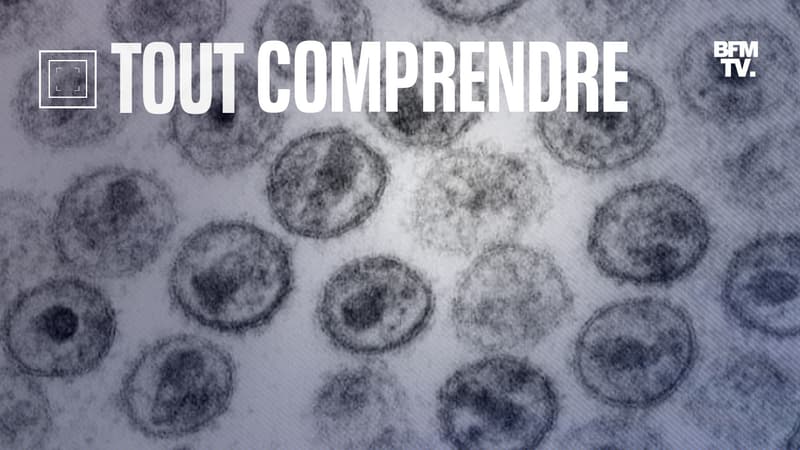The third to be cured of HIV. Researchers from the IciStem consortium, which includes a team from the Institut Pasteur, revealed on Monday a new case of HIV recovery after a bone marrow transplant. The so-called “Dusseldorf patient” no longer shows any trace of the virus in his body four years after treatment, according to a study published in NatureMedicine.
So far, only two similar recovery cases have been described in scientific publications: the Berlin patient in 2009 and the London patient in 2019.
· What treatment did this patient receive?
It all started in 2008, when a medical team from Düsseldorf (Germany) diagnosed a patient with HIV infection. The man began antiretroviral treatment in 2010 “which allows him to control the infection and reduce the amount of virus to undetectable levels in the blood, like most people on treatment,” stresses the Institut Pasteur.
But in 2011, this patient was diagnosed with leukemia, “that is, a cancer of the cells of the immune system located in the bone marrow.” Initially he was treated with chemotherapy, but was due to receive a stem cell transplant in 2013. Then they look for “a donor who carries the CCR5 delta-32 mutation”, because this mutation is known to prevent HIV from entering cells.
“We know that the HIV virus targets the cells of the immune system,” explains virologist Asier Sáez-Cirión, co-author of the study. However, “during a bone marrow transplant, the patient’s immune cells are completely replaced by the donor’s, allowing the vast majority of infected cells to be eliminated.”
In 2018, the medical team no longer detects the presence of HIV in the patient’s body, so the latter suspends his antiretroviral treatment against the virus, although he remains under surveillance. And 44 months later, no trace of the virus has yet been found in their analyzed tissues.
“Although we were unable to analyze all the patient’s tissues to definitively rule out the presence of HIV in the body, these results indicate that the immune system did not detect the virus after stopping treatment,” Asier Saez-Cirión specifies.
· What is the mechanism behind this healing?
The patient studied received stem cell donations before being cured of HIV, which comprises a mutation of the CCR5 molecule. It is the latter that allows HIV to enter cells.
“Located on the surface of white blood cells, CCR5 regulates host immune responses against pathogens,” explains Inserm“But, a victim of its own success, it also serves as an anchor for HIV to infect immune cells, thus contributing to the development of AIDS.”
However, some people, less than 1% of the world’s population, have a mutation of this gene: the CCR5 delta 32 mutation, which “is known to prevent HIV from entering cells and therefore protect against infection.” infection,” writes the Pasteur Institute. .
The Düsseldorf patient received a transplant with this mutation, as did the Berlin patient and the London patient before him, after which they cleared HIV.
· So we find a safe treatment for HIV?
However, stem cell transplant procedures remain exceptions. In the three cases of remissions described, they began because the patients suffered from “a hematological disease” for which “there is no other therapeutic alternative,” explains the Pasteur Institute. That is, this treatment was not launched to fight against HIV but against another disease.
In addition, this type of transplant is especially burdensome and can be very risky for the patient, so it remains exceptional and is used as a last resort.
Finally, since less than 1% of the general population carry this protective HIV mutation, it is very rare to find a bone marrow donor who is a match for the patient and who carries this mutation.
“In the end it is an exceptional situation when all these factors coincide so that this transplant is a double success in curing leukemia and HIV,” says Asier Sáez-Cirión.
· What good is this sudden discovery?
The result of this study “teaches us a lot about the healing mechanisms of HIV,” the infectologist Yazdan Yazdanpanah stressed on Tuesday in France Info.
Several gene therapy trials are also underway to find a way to introduce the valuable CCR5 mutation into people and make them more resistant to HIV. Vaccines are also being studied and if there have been any failures, the research is moving forward. Last November, immunologist Yves Lévy announced that his vaccine candidate had passed experimental phases 1 and 2.
If today there is no way to cure HIV on a large scale, the treatments for the disease, to be able to live with this virus, have developed a lot, “antiretroviral treatment is currently the best therapeutic alternative”, also writes the Institute Pasteur.
There is also a medicine to avoid contamination (Prep) and another to take within 48 hours of a possible infection (TPE).
However, the best way to fight HIV today is still prevention: it is essential to protect yourself during sexual intercourse, to get tested regularly in order to receive prompt care. According to Unaids, “38.4 million people were living with HIV in 2021” and 1.5 million became infected the same year.
Source: BFM TV


